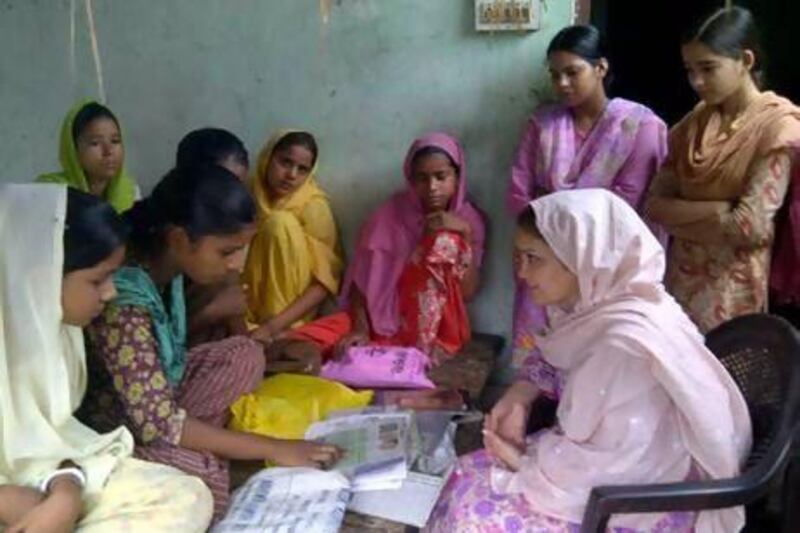SHARJAH // A 19-year-old part-time teacher is showing young girls in a northern Indian village how to study while they work.
Afsana Khan Bano tells her girls, who must work to make ends meet, that when they are working on the farm, weaving handloom yarn or completing household chores, they should revise multiplication tables or recite a poem.
Ms Bano is employed to teach them as part of a literacy programme run by a Sharjah-based financial consultant, Shazia Kidwai.
A dozen teenage girls from the Badagaon village in Uttar Pradesh will enrol in school this year for the first time in their lives.
"When the girls first came here, they didn't know ABC. Now they can read the newspaper," said Ms Bano, one of four teachers who completed high school and were selected by Mrs Kidwai to coach the girls for entry to school in June.
"People always tell girls, 'What will you do with studies anyway, you will just get married'," Ms Bano said.
"But I tell them they must be educated, they must stand on their own feet, be able to read train and bus signs.
"I tell them there is no shame in studying and they should feel proud of themselves."
Mrs Kidwai began the programme two years ago with the aim of improving literacy rates among young Muslim girls in villages surrounding her childhood home of Badagaon.
To date, 27 dropouts have returned to school.
Travelling to villages talking about the importance of education, she reaches out to families of illiterate agricultural labourers and handloom weavers. An enthusiastic network of family and friends help her to keep tabs on each new recruit's performance.
While it was difficult convincing the dropouts to return to class, it was even tougher getting girls who had never been to school to enrol.
"Girls who are 15 and older were reluctant to sit with kids in smaller grades," Mrs Kidwai said.
She realised that coaching them privately to help them join at grade 6 level, where the average age is 12, would boost their confidence.
"We still have a lot of work to do because the girls are still hesitant and shy," said Mrs Kidwai, who dips into her personal savings to help the girls. "I've had to convince their parents too."
Several girls are the first in their families to go to school and are worried about fitting in.
"I feel a little scared," confessed Ruksar Bano, 18, after a morning class at Afsana Bano's home.
"I'm so big and the other students will be so much younger."
Her cousin Seema, 15, was upbeat: "I like to read and I hope we will get knowledge there. Maybe after me, others will also go to school."
The girls complete household chores, take care of younger siblings and earn much-needed cash as handloom weavers.
"We will still have to work - that will not change. But after we learn maybe there will be some change in us," said Ruksar.
India's literacy rate is 74 per cent, but in Mrs Kidwai's home state of Uttar Pradesh the rate is only 69 per cent.
Despite free education and scholarships for girls in state-run schools, female students quit because of poverty, illness, the death of a parent or lack of information about opportunities.
"There is a lot of poverty in this area and so people don't send girls to school," said Khursheed Jehan, principal of the nearby Rafi Memorial Intercollege where the girls will study.
"But now many girls want to study more and work. Bringing in girls who have never been to school will be hard, there will be problems, but we will work through it."







